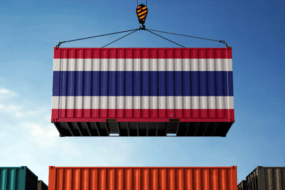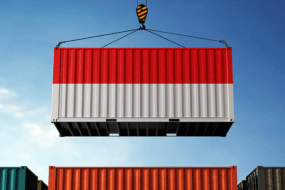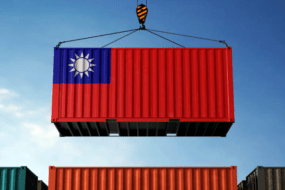- Home
- Trade News
- A closer look: Conditions and ...

The availability of food is essential to human survival. Food security is achieved when all people, at all times, have physical, social, and economic access to an adequate supply of safe, nourishing food that meets their dietary needs and food preferences for an active and healthy life.
For many years, it was believed that having adequate food produced in a nation to fulfill the requirements of all its residents constituted food security. Along with the growth of commerce, the definition of food security has also altered.
The rapid growth in food production and free global trade has enabled countries with disadvantageous agricultural conditions to purchase the necessary food from other markets.
Hence, access to food depended on income and not national production, and financial security prevailed over food security.
This perspective was influenced by economists who wanted to treat food and agricultural products just like other goods and made the volume and structure of domestic food production subordinate to market regulations and the comparative costs rule.
Every day, more than 690 million people go hungry. The UN estimates that 840 million people will experience hunger by 2030 if current trends continue.
Day-to-day hunger isn’t just an immediate problem; it also has long-lasting effects.
According to studies, food insecure children have limited physical, social, and emotional growth and development and are more likely to acquire chronic health problems as adults.
3 Conditions to Ensure Food Security
1. Physical food availability
The physical availability of food is linked with the need to maintain food reserves. This means that the national food economy ensures meeting the minimum physiological demand, and imports should provide foods in excess of this minimum demand.
2. Economic food availability
When enough food is continuously available to all citizens of a nation, food availability is said to have been attained–there is physical food availability. But what if the people do not have the means to pay for food?
A consumer must have the purchasing power to facilitate the transaction of essential goods and services on the market. Their purchasing power in the food market depends on income and food prices, as well as the costs of other goods and services.
3. The health value of a single food product
Food products should be free of any substances harmful to health, e.g., residues of pesticides, antibiotics, dioxins, and harmful colourants, as well as poisonous substances and pathogenic microorganisms.
Consumer food rations, balanced food rations like the necessary energy level, and the adequate proportions of nutritive components depend on age, sex and type of work.
Food safety is an integral part of food security. For the consumer, food safety is the most important feature of food quality; therefore, food law regulates this issue in detail, providing the consumer with the certainty that the purchased food is compliant with the safety requirements.
Threats to Food Security
The world population increase, rising food consumption, particularly for meat and meat products as well as milk and dairy products, shortage of water and land resources, the battle for arable land with biofuel producers, industry, and urbanisation are all exerting significant pressure on the food system.
Global food security will be negatively impacted by factors such as climate change, the loss of agricultural diversity and ecosystem biodiversity, new plant and animal diseases, rising energy and food prices, food losses and waste, and market speculation.
1. Word population growth
In the last 50 years, i.e., 1960-2010, the global population has increased from 3.0 to 6.8 billion. On 11 October 2012, the world was inhabited by 7,000,976,253 people. According to demographic forecasts, in 2025, the Earth will be populated by 7.4 billion people, and in 2050 – 9.1 billion people.
The rapid growth of the world’s population is one of the most pressing concerns in the modern world, which is mainly caused by the high birth rate in emerging nations, particularly in Africa and certain countries in Asia and South America.
Grave differences in the global population’s nutrition level are caused by inadequate food distribution, unequal food production (the biggest regions of food demand are not the same as the largest areas of food production), and subpar political and institutional responses.
Climate change-related disasters, including droughts, floods, and other natural calamities, would adversely affect more populated nations because of their vulnerability. These phenomena would then impact the world’s ability to produce food and sustain the people.
2. Increasing demand for food
Food consumption will grow when the world population rose to almost 9 billion people in 2050, as predicted. The economy and the amount of food consumed are closely tied, with the amount of food consumption rising with economic progress.
Global economic expansion reshapes consumption patterns dominated by animal product consumption, notably meat and meat products. It increases the world’s population’s wealth and the need for food.
If new land is not immediately implanted with crops, the Food and Agriculture Organization (FAO) predicts that 370 million people will be in danger of going hungry by the start of 2150.
3. Diversity of agricultural plant species becoming extinct
In addition to natural environments and wild species of plants and animals, agricultural biodiversity also includes genetic resources, such as regional crop variations and livestock breeds.
In a changing environment, crop diversification is the only and most important way to ensure food security. The possibility that some of them can adapt to environmental changes increases with the number of species and variations present in a given field or habitat. Because fewer creatures serve as their hosts, the likelihood of diseases and pests is also reduced by species variety.
4. Increasing water shortages and decreasing land availability
Water is among the most critical factors that determine someone’s daily life. Worldwide, there are around 1.387 million km3 of water resources; freshwater makes up only 3% of the world’s water resources, and saltwater makes up 97%.
Thirty per cent of fresh water is kept below, while 69% is held in glaciers and ice caps (groundwater). This shows that just 1% of the world’s water resources are used for drinking water, and that climate change is causing water supplies to decline in many countries.
It is said that 0.23 km3 of water is provided to one person. The average quantity of water allotted to one person will fall by 1/3 over the course of the next 20 years, according to the World Water Development Report.
The water demand is growing at an alarming rate due to the more significant number of people worldwide. The increase in water demand is also a result of changes in consumption patterns and surges in energy production, especially biofuels.
The FAO claims that water is the primary barrier preventing an increase in global food production. Agriculture utilises 70% of global resources of fresh water, and climate changes further aggravate this problem.
A significant increase in demand for food must be met based on the diminishing water resources and land resources since land areas are decreasing due to soil erosion and depletion of nutrients, infrastructure development, and urbanisation.
With so much population growth projected to 2050, we will need it to feed on a smaller and smaller area of agricultural land.
5. Food losses and food waste
Food losses and waste of food are two different issues. Food losses occur primarily in low-income countries as a result of the lack of adequate infrastructure. These occur mainly at the production stage, and losses at the consumption stage are much smaller.
Production and inadequate storage lead to approximately 40% loss of food. We should take steps to reduce it. One of them, under the slogan “Do not waste food. Think organic”, was conducted by the Federation of Polish Food Banks in 2012.
Limitation of food waste will increase land use efficiency, improve water management, ensure global benefits for the whole agriculture sector worldwide, and reduce undernourishment in developing countries.
Solutions to Food Insecurity
More than 690 million people go hungry, and no region is exempt from it. Being a global challenge, governments and international institutions have employed all possible means to defeat food insecurity.
The United Nations, for instance, posed 17 Sustainable Development Goals, which ought to be achieved by 2030. The second goal is to achieve food security and improved nutrition, end hunger, and promote sustainable agriculture.
Therefore, every individual, family, group, organisation, corporation, institution, and government must strive to achieve food security before 2030. Most institutions and countries have not done much, but there are hopes for a secure food future. Here are some of the possible solutions to food insecurity.
1. Reduce food waste
According to the FAO, 1.3 billion tons of food waste is wasted annually worldwide. The primary causes of food waste include insufficient planning, rough or dangerous routes, excessively picky consumers, and inadequate storage facilities. A community will be more secure if storage facilities are upgraded and proper planning for how the food will be used.
2. Enhance current infrastructure programs
Due to inadequate roads, storage facilities, and food processing equipment, some farmers are unable to transport their goods to market. Instead of being delivered to those in need or processed, it goes wrong on the fields. More food will be accessible on the market, and the levels of food insecurity may decrease if the infrastructure is strengthened.
3. Improve trade policies
Due to unjust trade regulations, some farmers cannot feed the community. Food has already been commercialised by powerful corporations, making it more difficult for small-scale farmers to sell their goods. Therefore, governments should enhance such programs and ensure that participation is equitable for all.
4. Work towards fighting climate change
Climate change negatively shapes both our way of life and food production. We can guarantee there will be enough food for current and future generations if we fight climate change and practice sustainable farming.
Conclusion
Food is one of the necessities of humans. Therefore, there should not be such a problem that can cause serious health issues to protect consumer rights.
People are food insecure when one or more dimensions of food security availability, access, utilisation, and stability are compromised. A wide variety of scientific techniques have been developed to protect consumers.
Advanced tools and continuing research efforts should be applied to address all food quality issues and ensure brand and consumer protection.
Looking ahead, researchers should focus on more portable, rapid authenticity tools, such as simple and fast screening techniques for use in the field.
There are different solutions nowadays that can fight food insecurity. We must be responsible enough for our actions because our life is at stake here. Secure food availability may have various sound effects, such as employment creation, economic growth and decreased poverty.
If you want to understand food security and trade further, use TradeData.Pro – an all-inclusive platform for trade data.
Access import-export, shipping, and custom records, find suppliers, and check trends and competitors with TradeData.Pro. Request an online demo today!
Please contact us or email us at sales@cic-tp.com for more info.
Recent Posts
Archives
- July 2025
- June 2025
- May 2025
- April 2025
- March 2025
- February 2025
- January 2025
- December 2024
- November 2024
- April 2024
- March 2024
- January 2024
- December 2023
- November 2023
- October 2023
- September 2023
- August 2023
- July 2023
- June 2023
- May 2023
- April 2023
- March 2023
- February 2023
- January 2023
- December 2022
- November 2022
- October 2022
- September 2022
- August 2022
- July 2022
- June 2022
- May 2022
- April 2022
- March 2022
- February 2022
- January 2021
Categories
Recent Post
Upsurge for Exports of Thailand: Agriculture and
- July 30, 2025
- 10 min read
Indonesia Exports: Sunny Outlook Despite Coal, US
- June 30, 2025
- 9 min read
Taiwan Exports: Hitting Record Highs in Challenging
- June 30, 2025
- 7 min read
All Tags
Agriculture Automotive Brazil Business Business Opportunities Buyers China Coffee Commodities Crops Ecommerce Economic Economy Electronics Energy Environmental Europe Export Exports Future Garments Global Import India Industries International Trade Leads Leads Generation manufacturing Markets Opportunities Pharmaceuticals Prices Rice Russia Supplier Textiles Trade Trade Data Trade Data Pro Turkey Ukraine United States Vietnam Worldwide








